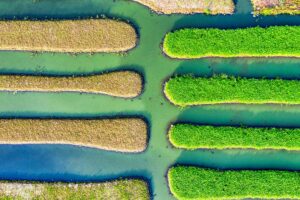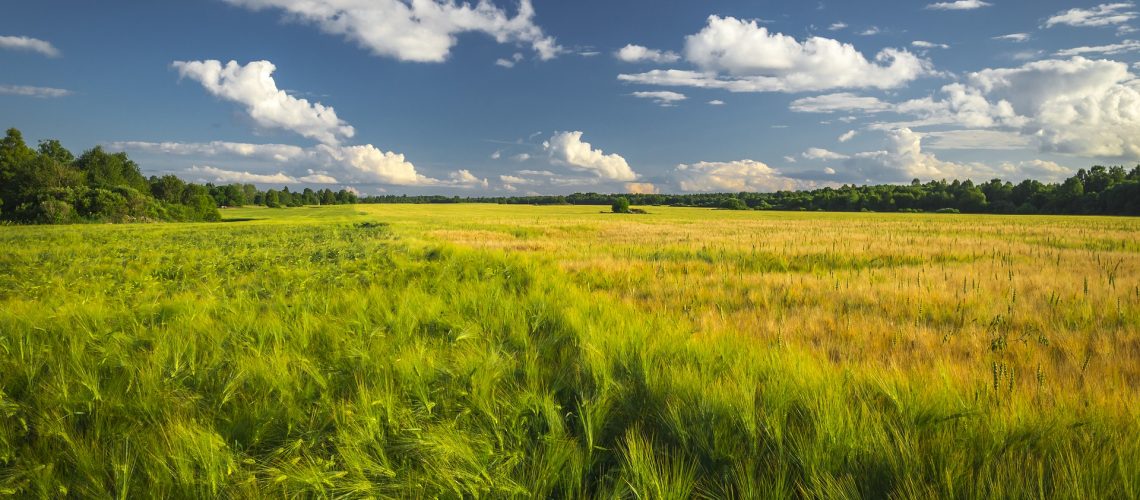Our water supply has been seriously damaged by climate change. Saltwater intrusion has aggravated the situation, as has competition from new water users. Despite these hurdles, America’s farmers and ranchers are fighting to keep output going and feed an ever-growing population in the United States and worldwide. They will be forced to accomplish more with less water today and in the future. In this article, we’ll go through several methods for water conservation while maintaining a healthy crop.
Ways To Conserve Water
Here are some of the different ways of water conservation:
Residue And Tillage Management (No-Till)
No-till is the process of employing a no-till planter to create a narrow furrow just large enough for a seed to be planted. Prior cash and cover crop residues remain on the surface due to no plowing or disking, conserving the soil and keeping it healthier than it would be with conventional tillage. It improves soil health and structure by breaking it down into organic materials. Fields maintained for numerous years with high-residue no-till have greater levels of organic matter, higher infiltration rates, and a higher water retention capacity than traditionally tilled fields. This implies that the water absorbed stays in the field instead of flowing off the soil or traveling beneath plant roots. Thus, it keeps soil moisture intact.
Drip Irrigation
 Drip irrigation systems distribute water straight to the roots of plants, decreasing evaporation that occurs with spray irrigation systems. Watering may be scheduled during the cooler portions of the day, minimizing further water loss. Drip irrigation delivers water directly to plant roots, avoiding the evaporation that happens with spray irrigation. It can help protect against soil nutrient loss and erosion caused by conventional irrigation. Drip irrigation, when properly designed, may save up to 80% more water than traditional irrigation and can even help enhance agricultural yields.
Drip irrigation systems distribute water straight to the roots of plants, decreasing evaporation that occurs with spray irrigation systems. Watering may be scheduled during the cooler portions of the day, minimizing further water loss. Drip irrigation delivers water directly to plant roots, avoiding the evaporation that happens with spray irrigation. It can help protect against soil nutrient loss and erosion caused by conventional irrigation. Drip irrigation, when properly designed, may save up to 80% more water than traditional irrigation and can even help enhance agricultural yields.
Capturing And Storing Water
Many farms utilize groundwater, while others have constructed their ponds to absorb and store rainfall for usage throughout the year. Well-managed ponds can also provide habitat for local species. Dikes, berms, and contouring can be used to deflect water runoff from catchment surfaces to trees or plants. Rain gutters or pipes can guide rainwater flow to containers if you’re storing it. Regardless of water quality, you may then utilize this saved water as a backup water supply during dry spells in the local watershed.
Irrigation Scheduling
Smart water management includes how and when, the number of times, and how much water is given. Farmers closely monitor the weather forecast, soil, and plant moisture and adjust their irrigation schedule to the present circumstances to prevent under- or over-watering their crops. Irrigation scheduling is important because it allows the irrigator to deliver the exact amount of water needed to accomplish the desired result. This improves the efficiency of irrigation. Accurate measurement of the volume of water used or the depth of application is essential. Without knowing how much water was applied, a farmer cannot utilize water efficiently.
Check For Leaks And Damage
Whether you already have an irrigation system, check to see if any water is being lost before it reaches the crops. Leaks can occur when irrigation pipes and equipment get damaged or clogged. Check for leaks in your equipment and fix them so that all of the water you have reaches the crops.
Give some of these basic water-saving strategies a try on your farm if you haven’t already, and see for yourself how more effective water usage might benefit your crops this season.
Drought-Resilient Crops
Farmers can also receive more produce per drop by growing crops suited to their location’s climate. Drought-tolerant crop species are endemic to dry places, while other crop types have been chosen over time for their low water requirements.
Dry Farming
It’s critical to use special tilling techniques and pay close attention to microclimates. Dry farming generates lesser yields than irrigated farmland, enhancing the taste. Dry farming includes mulching, frequent fallowing, cross-plowing, recurrent soil maintenance after rainfall, and weed control.
Rotational Grazing
Rotational grazing is a method of moving livestock between areas to encourage grassland regeneration. Drought-resistant pastures benefit from good grazing management, promoting water absorption and reducing runoff. Rotational grazing also saves water by increasing soil organic matter and improving fodder cover.
Mulch And Compost
Compost, or decomposed organic waste used as fertilizer, has been shown to increase soil structure and ability to store water. Mulch is a moisture-retaining substance that is put above the soil. Mulch formed from organic materials will decompose into compost, improving the soil’s ability to absorb water even more. During the dry season, compost and mulch assist farmers in holding more water in the soil.
Cover Crops
Cover crops assist in avoiding soil erosion and compaction by reducing weeds, increasing soil fertility and organic content, and protecting soil that would otherwise go bare. This permits water to infiltrate the soil more freely, increasing its water-holding capacity. According to North Central Sustainable Agriculture Research and Education, cover crop farms were 11 to 14 percent more productive than regular fields during drought years. Areas with cover crops reduced have more disadvantages.
Rotate Crops
Several farmers rotate the sorts of crops they grow by season or year, giving the soil and plants enough diversity to thrive. Varying crops require different quantities of soil nutrients and water. Crop yields are normally better when crops are rotated on a regular basis.
Improve The Soil And Conserve Water
Plant roots dig deeper, and bacteria unleash nutrients in the soil when the right microbes are present. These micro-armies remove dangerous impurities, bond soil, accelerate supplies to plants, and liberate essential elements in your soil and fertilizers. As the biological profile of the soil improves, fewer resources are required to maintain healthy and active crops. With the right microbe from Bactelife’s H2Organics, water consumption is reduced, and plants thrive producing higher yields with less impact on the soil and environment.
Conclusion
Water is the lifeblood of ecosystems such as forests, lakes, and wetlands, which are essential for current and future generations’ food and nutritional security. Droughts are getting worse. Water supplies are getting scarce. Pollution is causing natural habitats to deteriorate. Humanity is trying to repair the harm in many ways, including through groups, organizations, and taxes. Nature, on the other hand, does not accept bribes. To address the demands of the world in which we live, we need more than money. Reach out to us today to learn more ways of conserving water for your crops.


